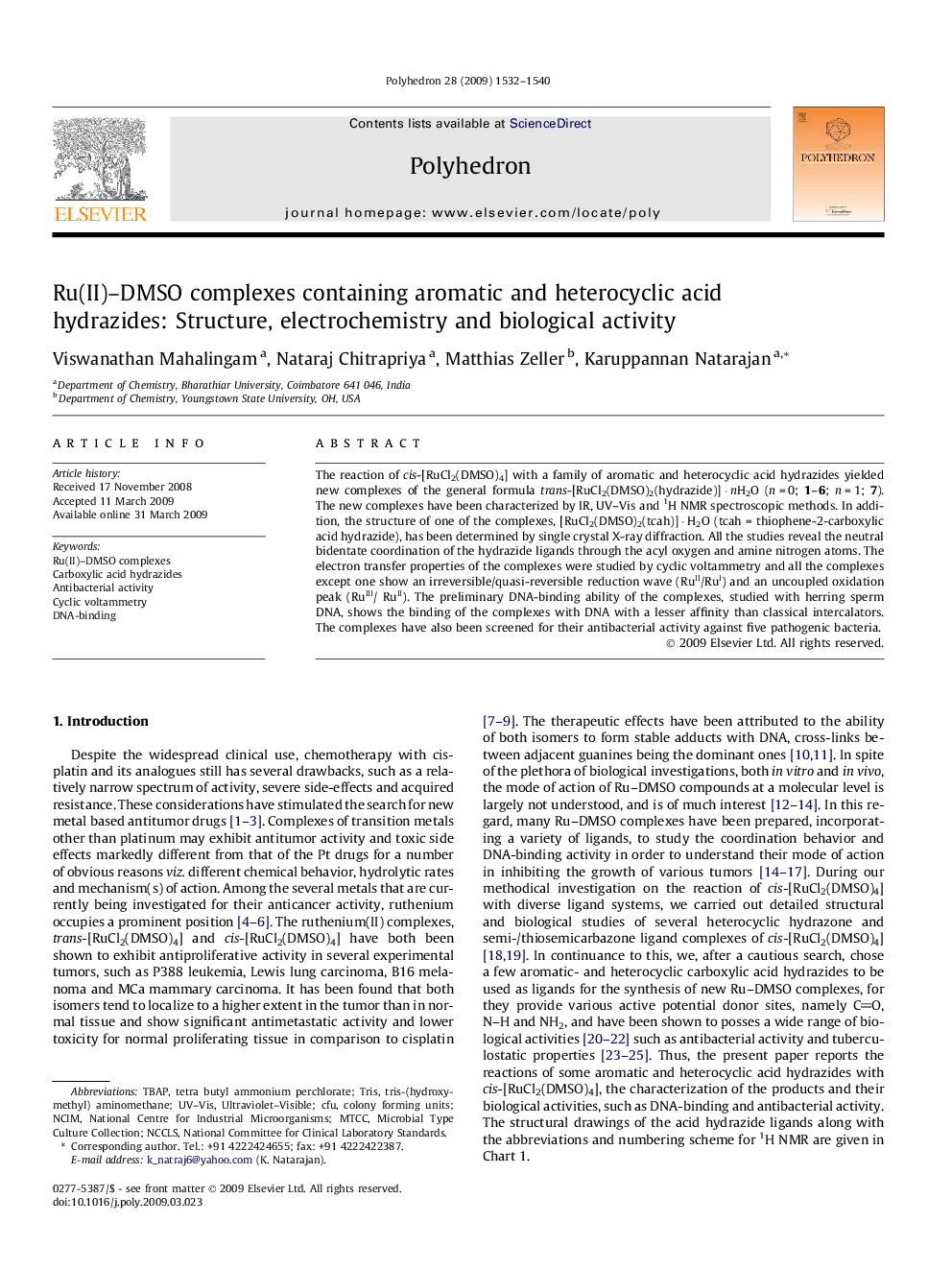| Article ID | Journal | Published Year | Pages | File Type |
|---|---|---|---|---|
| 1340151 | Polyhedron | 2009 | 9 Pages |
The reaction of cis-[RuCl2(DMSO)4] with a family of aromatic and heterocyclic acid hydrazides yielded new complexes of the general formula trans-[RuCl2(DMSO)2(hydrazide)] · nH2O (n = 0; 1–6; n = 1; 7). The new complexes have been characterized by IR, UV–Vis and 1H NMR spectroscopic methods. In addition, the structure of one of the complexes, [RuCl2(DMSO)2(tcah)] · H2O (tcah = thiophene-2-carboxylic acid hydrazide), has been determined by single crystal X-ray diffraction. All the studies reveal the neutral bidentate coordination of the hydrazide ligands through the acyl oxygen and amine nitrogen atoms. The electron transfer properties of the complexes were studied by cyclic voltammetry and all the complexes except one show an irreversible/quasi-reversible reduction wave (RuII/RuI) and an uncoupled oxidation peak (RuIII/ RuII). The preliminary DNA-binding ability of the complexes, studied with herring sperm DNA, shows the binding of the complexes with DNA with a lesser affinity than classical intercalators. The complexes have also been screened for their antibacterial activity against five pathogenic bacteria.
Graphical abstractNew Ru(II)–DMSO complexes containing a neutral bidentate ON chelate of carboxylic acid hydrazides have been synthesized and characterized by analytical and spectroscopic methods. The structure of one of the complexes, [RuCl2(DMSO)2(tcah)] · H2O (tcah = thiophene carboxylic acid hydrazide) has been determined by the single crystal XRD technique. The electrochemistry of the complexes has been studied by cyclic voltammetry. The complexes have been shown to bind herring sperm DNA non-intercalatively. The antibacterial activity of the complexes has also been evaluated.Figure optionsDownload full-size imageDownload as PowerPoint slide
